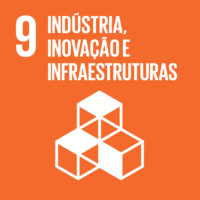Ciência_Iscte
Publicações
Descrição Detalhada da Publicação
Resolving interoperability in concurrent engineering
Título Livro
Concurrent Engineering in the 21st Century: Foundations, Developments and Challenges
Ano (publicação definitiva)
2015
Língua
--
País
--
Mais Informação
Web of Science®
Esta publicação não está indexada na Web of Science®
Scopus
Google Scholar
Esta publicação não está indexada no Overton
Abstract/Resumo
To face an increasingly competitive environment within a globalization context, and to focus on core
high-added value business activities, enterprises have to establish partnerships with other companies
specialized in complementary domains. Such an approach, primarily based on optimization of the value
chain, is called virtualization of the Enterprise. Enterprises relying on virtualization, sub-contracting
and outsourcing have to coordinate activities of all the partners, to integrate the results of their
activities, to manage federated information coming from the different implied information systems and
to re-package them as a product for the clients. The adopted organization, which is considering as well
as the internal and external resources, is called “Extended Enterprise”. Nevertheless, in such complex
emerging networked organizations, it is more and more challenging to be able to interchange, to share
and to manage internal and external resources such as digital information, digital services and
computer-enacted processes. In addition, digital artifacts produced by enterprise activities are more and
more heterogeneous and complex. After characterizing expected interoperability for collaborative
platform systems and highlighting interoperability issues and brakes not yet addressed, this chapter
describes an innovative approach to build interoperability based on a Federated Framework of legacy
eBusiness standards of a given ecosystem. It implies facing important issues related to semantic
preservation along the lifecycle of the artifacts and infrastructures required to define and exploit an
application. We present two use case studies that apply interoperability strategies.
Agradecimentos/Acknowledgements
--
Palavras-chave
Interoperability,Enterprise standard,Organization network,Extended enterprise,Enterprise virtualization,Federation,Servitization
Classificação Fields of Science and Technology
- Ciências Físicas - Ciências Naturais
Contribuições para os Objetivos do Desenvolvimento Sustentável das Nações Unidas
Com o objetivo de aumentar a investigação direcionada para o cumprimento dos Objetivos do Desenvolvimento Sustentável para 2030 das Nações Unidas, é disponibilizada no Ciência_Iscte a possibilidade de associação, quando aplicável, dos artigos científicos aos Objetivos do Desenvolvimento Sustentável. Estes são os Objetivos do Desenvolvimento Sustentável identificados pelo(s) autor(es) para esta publicação. Para uma informação detalhada dos Objetivos do Desenvolvimento Sustentável, clique aqui.

 English
English



